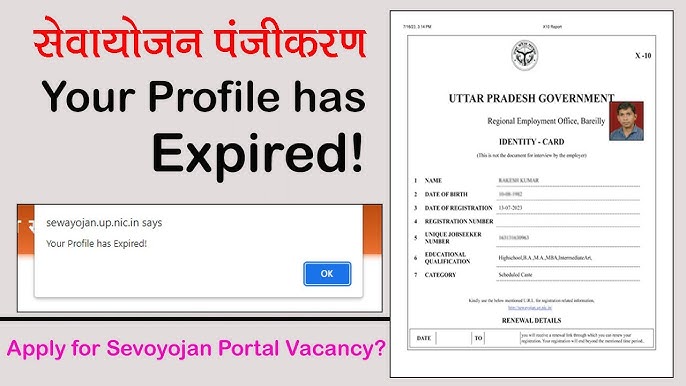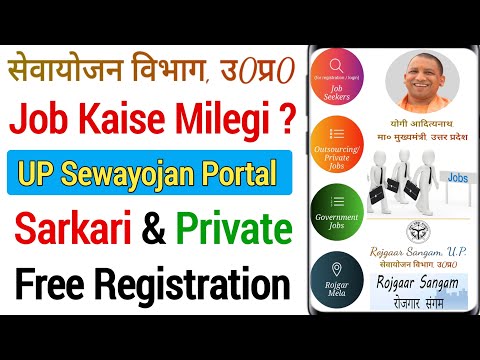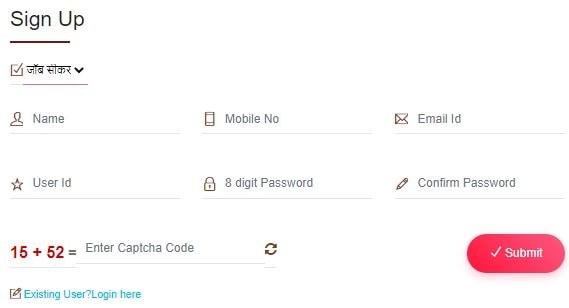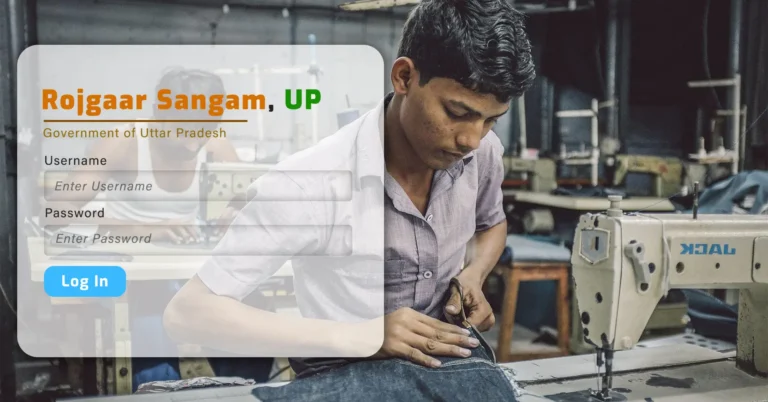Sewayojan ap.nic.in — A Complete Guide to Andhra Pradesh’s Digital Employment Portal
Sewayojan ap.nic.in is more than a URL string; it represents a promise of digital access to job matching, unemployment support and livelihood services for citizens. Whether you’re a fresh graduate in Visakhapatnam, a returning migrant worker in Guntur, an employer in Vijayawada, or a policymaker tracking outcomes, understanding how sewayojan ap.nic.in fits into Andhra Pradesh’s employment ecosystem matters. This long-form, SEO-optimized article covers the portal’s history, objectives, implementation, state-level impact, success stories, challenges, comparisons with other schemes, and future prospects — with practical insight and evidence-based context.
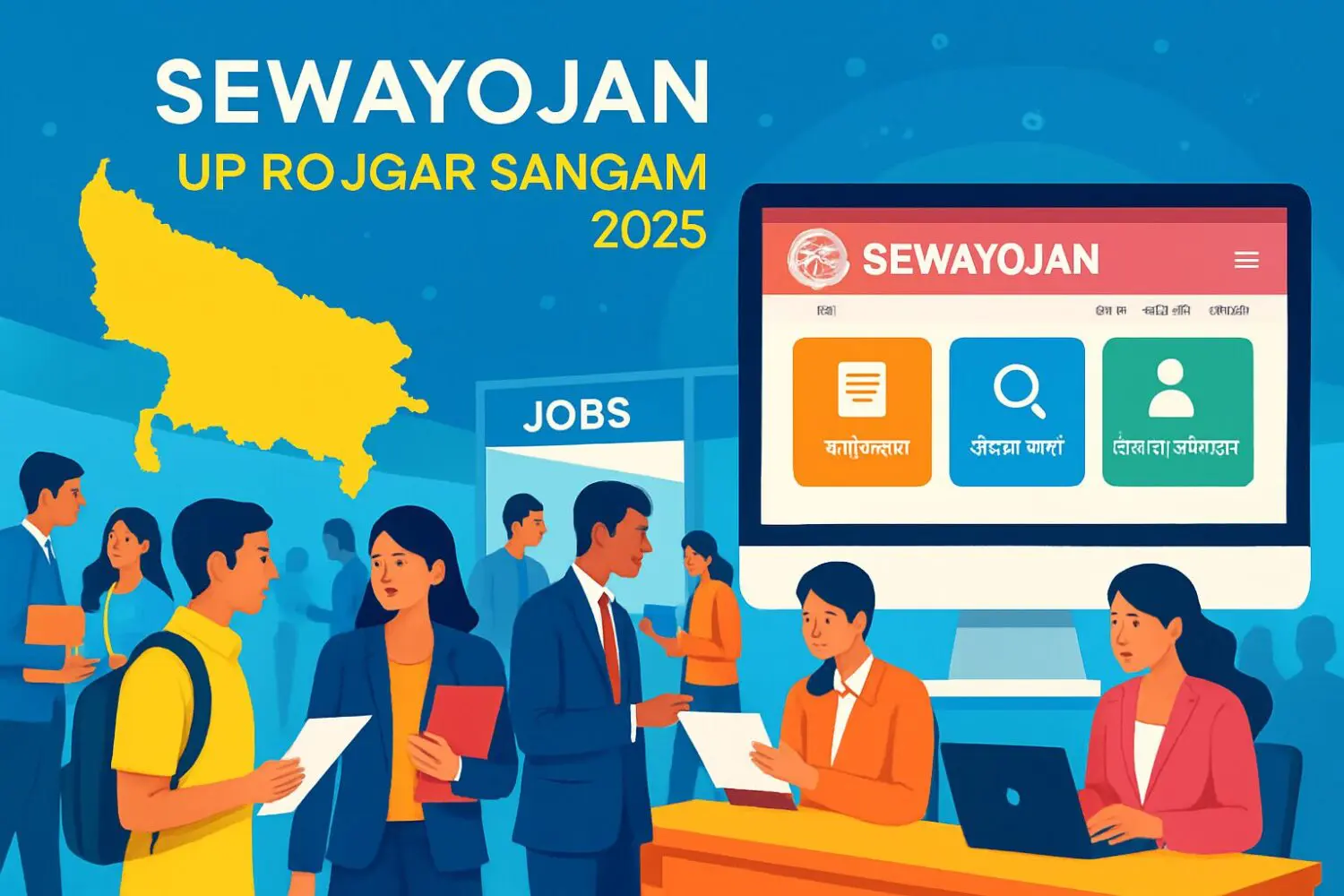
Introduction: Why Sewayojan ap.nic.in matters
Digital employment exchanges have become a critical bridge between job seekers and employers across India. The phrase sewayojan ap.nic.in signals an Andhra Pradesh–focused online employment service (mirroring similar portals in other states). At its best, sewayojan ap.nic.in helps aggregate vacancies, standardize registration, enable targeted notifications, and support large-scale initiatives like rojgar melas (job fairs) and skilling linkages. In contexts where rural-to-urban migration and gig-economy disruption are commonplace, a well-run employment portal can lower friction, reduce information asymmetry, and improve outcomes for women, youth, and vulnerable groups.
Two important realities anchor this article: (1) state-run employment portals often follow a common architecture and service model pioneered by NIC-backed platforms, and (2) tailoring to state-specific policy priorities (women’s empowerment, rural development, social welfare linkages) is what makes a portal like sewayojan ap.nic.in consequential for Andhra Pradesh. For example, national and state NIC centers provide hosting, technical frameworks and interoperability, while local departments adapt processes and outreach. Sewayojan+1
A short history and evolution of digital employment exchanges
Employment exchanges in India predate the internet: they began as physical offices to register job seekers and notify vacancies. Over decades these offices modernized, and National Informatics Centre (NIC) and state governments turned to digital platforms to scale services. Portals commonly branded under names such as “Sewayojan” or “Rojgaar Sangam” emerged across several states to consolidate job registration, employer registration, vacancy posting, and campaign management.
The typical evolution stages were:
-
Paper-based registration and local vacancy circulars — employment officers maintained registries by hand.
-
Early web portals — static vacancy lists and PDF forms appeared.
-
Integrated, interactive platforms — secure logins, searchable vacancies, employer dashboards, and automated notifications.
-
Value-added services — skill-mapping, testing, rojgar mela coordination, and linkages to social welfare or stipend programs.
Sewayojan-style platforms — exemplified by established portals such as the Uttar Pradesh Sewayojan (Rojgaar Sangam) — show how well-implemented digital exchanges can host career counselling, job alerts, and campus placement workflows, and often integrate with district-level activities. These operational patterns inform how sewayojan ap.nic.in would logically function and scale within Andhra Pradesh’s administrative setup. Sewayojan+1
Objectives of sewayojan ap.nic.in
A state employment portal centered on the keyword sewayojan ap.nic.in typically pursues several interlinked objectives:
-
Universal registration: Create a single, searchable repository of job seekers across Andhra Pradesh so employers can find candidates aligned to role requirements.
-
Transparent vacancy publication: Enable departments, public sector undertakings and registered private employers to publish vacancies openly, reducing reliance on informal hiring networks.
-
Targeted outreach: Send SMS/email/job-feed alerts to candidates whose profiles match new vacancies.
-
Skill linkage: Map registered candidates to training opportunities and certify outcomes that improve employability.
-
Social-welfare coordination: Link job-seeker data to state poverty-alleviation, women empowerment, and rural development schemes so that livelihoods planning is holistic.
-
Monitoring & analytics: Provide administrators with dashboards to measure unemployment trends, sectoral demand, and program effectiveness.
Framed this way, sewayojan ap.nic.in is intended to be both a service and a policy instrument: it helps individual job-seekers and feeds strategic planning at the state level.
How the portal is implemented — typical architecture and processes
Although implementations vary across states, employment portals commonly follow a modular architecture. The modules that would underpin sewayojan ap.nic.in include:
-
User registration & identity: Secure sign-up for job seekers (Aadhaar/mobile verification options), employers (establishment details), and staff (employment officers).
-
Profile & qualification database: Structured candidate profiles capturing education, certifications, work experience, language skills, and geographic preferences.
-
Vacancy engine: Interfaces for departments and employers to post vacancies with filters for qualifications, age, and reservation categories.
-
Matching & notifications: Rule-based matching engine that pushes vacancies via SMS/email and maintains an application tracker for candidates and employers.
-
Rojgar mela / event module: Tools to plan, advertise, and manage job fairs and campus placements, including candidate-shortlisting workflows.
-
Analytics & reporting: Visual dashboards for policymakers to monitor registrations, placements, and demographic breakdowns.
-
Interoperability & APIs: Connectivity to national frameworks (for example, employment-related data exchanges, skill certification authorities) and to district-level systems.
Technical hosting and support are frequently provided by state NIC centers (for example, NIC Andhra Pradesh), which offer secure hosting, domain management, and compliance support — an important factor for trust and uptime.
Features job-seekers can expect on sewayojan ap.nic.in
For citizens registering on sewayojan ap.nic.in, practical features usually include:
-
Guided registration with Aadhaar or ID verification.
-
Profile building with education, skills, and experience entries.
-
An alert system for new vacancies and job fairs.
-
Application status tracking and interview calendar updates.
-
Access to training or reskilling opportunities mapped to job openings.
-
Career counselling resources and schedule-to-attend rojgar melas.
The combination of these features aims to reduce friction: candidates no longer need to visit multiple district offices or track scattered ads. Well-run portals also include grievance redressal and support desks to help less digitally literate users. This kind of workflow is visible in mature sewayojan implementations across other states.
How employers and departments use the portal
Employers benefit from sewayojan ap.nic.in by:
-
Advertising vacancies to a verified candidate pool.
-
Shortlisting by automated filters (qualifications, experience).
-
Scheduling interviews and viewing candidate documents.
-
Engaging in campus placements or outsourcing drives.
-
Coordinating with training institutions for apprenticeship or on-the-job training hires.
Government departments use the portal to meet reservation mandates, fill contractual posts transparently, and to mobilize job seekers for public works, programs, and temporary placements tied to welfare schemes.
State-level impact: Andhra Pradesh context
To evaluate how sewayojan ap.nic.in could alter the employment landscape in Andhra Pradesh, consider three intersecting state priorities:
-
Rural employment and NREGA linkages. Andhra Pradesh’s large rural population often relies on MGNREGA and allied schemes for income. A state employment portal can identify households seeking longer-term work, enabling targeted skilling to transition workers from seasonal labor to stable jobs. Integrating portal data with district MGNREGA stats helps planners identify gaps in demand and plan skilling drives.
-
Women’s economic participation. Increasing female labor force participation remains a policy aim. A portal like sewayojan ap.nic.in can run women-only job drives, map caregiving-friendly opportunities, and coordinate with women empowerment schemes to provide stipends or transport support where necessary.
-
Youth and urban employment. With rapid youth cohorts entering the labor market, the portal can host campus drives, apprenticeships, and notifications specifically targeted at graduates, plus linkages to industry clusters in Visakhapatnam, Vijayawada, and Tirupati.
These state-level linkages enhance a portal’s utility beyond mere vacancy listings — they make it a tool for social policy design and impact measurement.
Success stories and illustrative case studies
While specific Andhra Pradesh success stories tied to sewayojan ap.nic.in are emergent, other sewayojan-style platforms provide strong precedents:
-
Rojgaar Sangam (Uttar Pradesh): Large-scale electronic registration and employer engagement have supported state-sponsored rojgar melas and placement drives, demonstrating how an integrated portal can manage district-by-district campaigns and mass notifications. Such examples reinforce the practical gains an Andhra Pradesh portal would seek to replicate. Sewayojan
-
District-level coaching & placement centers: In several states, the combination of coaching centers attached to employment exchanges and the online portal has increased selection rates in public sector recruitments — an approach Andhra Pradesh could scale through sewayojan ap.nic.in.
-
Data-driven outreach for women and rural youth: Where portals partner with NGOs and anganwadis to populate candidate profiles, targeted interventions (transport subsidies, evening-shifts hiring) have improved take-up among underrepresented groups.
In each case, the central lesson is that technology multiplies the reach of on-ground programs; it does not substitute for community engagement.
Implementation challenges
Even with sound design, several challenges can hamper the impact of sewayojan ap.nic.in:
-
Digital divide and registration bottlenecks. Rural, elderly, and low-literacy citizens may struggle to register without district-level facilitation. Offline registration drives and assisted kiosks are necessary complements.
-
Data quality and verification. Incorrect or incomplete profiles reduce match accuracy. Integrating Aadhaar-based verification (while respecting privacy) and requiring scanned certificates help, but create onboarding friction.
-
Employer engagement. Private firms sometimes prefer familiar recruitment channels. Active employer outreach and incentives (like reduced paperwork for campus recruitment) can increase portal adoption.
-
Siloed programs. If skilling programs, stipend schemes and employment services remain siloed administratively, the portal will only host vacancies without solving deeper employability gaps.
-
Monitoring and fraud prevention. Ensuring that placements recorded on the portal are genuine and that benefits reach intended beneficiaries requires robust audit and feedback mechanisms.
-
Policy coordination across departments. Employment outcomes depend on housing, transport, and childcare policies too. Without inter-departmental coordination, portal interventions can only go so far.
Addressing these challenges requires a combination of technical fixes, process redesign, and sustained outreach.
Comparisons with other state portals and national frameworks
Comparing sewayojan ap.nic.in to other state portals and national frameworks helps highlight strengths and improvement areas:
-
Against mature state portals (e.g., Uttar Pradesh’s Sewayojan/Rojgaar Sangam): The UP platform shows advanced employer dashboards, event management, and broad district coverage. Andhra Pradesh can adopt similar modules while tailoring user experience to local languages and district contexts.
-
Versus national portals & initiatives: The central government’s employment and skill frameworks (and schemes like Berojgari Bhatta in various states) create a multi-level landscape. A state portal should interoperate with national databases and skill certification authorities to avoid duplication and to enable portability of candidate profiles across states.
-
Integration with NIC-hosted services: Hosting on NIC infrastructure helps ensure uptime, domain trust and integration with other departmental services. Andhra Pradesh’s NIC center is a logical partner for managing and scaling sewayojan ap.nic.in.
Policy framework & governance for sewayojan ap.nic.in
To maximize impact, the portal’s governance should embed these principles:
-
Clear roles and responsibilities: State employment department (policy), district employment offices (operations), NIC/state-IT (technical hosting), and line departments (training/placements) must have delineated SLAs.
-
Privacy & consent: Candidate data must be stored with explicit consent and a transparent privacy policy. Access control and audit trails are essential.
-
Open data for planning: Aggregated, anonymized dashboards should inform public policy while protecting personal data.
-
Performance-linked metrics: KPIs such as registrations converted to placements, time-to-placement, and gender parity in placements should be tracked.
-
Feedback loops: Employer and candidate feedback must be formalized to improve matching and reduce churn.
Such a policy architecture strengthens the portal’s ability to deliver measurable results rather than just functioning as a static job-board.
Operational best practices for high adoption
To ensure sewayojan ap.nic.in is used widely and effectively, administrators should focus on:
-
Localized onboarding: District-level camps and assisted registration counters for those who can’t register online.
-
Mobile-first design: Given high smartphone use, the portal must be responsive and, where feasible, include a lightweight mobile app.
-
Language options: Offer Telugu and English interfaces, with field help and FAQs in local dialects.
-
Active employer engagement: Dedicated account managers for large employers and industry clusters.
-
Skilling linkages: Automated prompts recommending short courses for candidates who lack key skills for posted vacancies.
-
Periodic data audits: Validate placements with employer confirmations and, for social programs, beneficiary verification.
By combining technology with on-ground facilitation, a portal becomes inclusive rather than exclusionary.
Measuring success: metrics and evaluation
Meaningful evaluation goes beyond raw registrations:
-
Placement conversion rate: Percentage of registered candidates placed via the portal.
-
Time-to-placement: Average time between registration and placement.
-
Sectoral absorption: Which industries are hiring and at what skill levels.
-
Gender parity index: Placement ratio by gender.
-
Rural vs urban reach: Registrations and placements disaggregated geographically.
-
Sustainability of placements: Retention rates at 3–6 months after placement.
Regular impact assessments using these KPIs help the portal evolve from data collection to evidenced policy-making.
Future prospects and enhancements for sewayojan ap.nic.in
Looking ahead, some promising directions for sewayojan ap.nic.in include:
-
AI-assisted matching: Use natural language processing and skills ontologies to improve match quality between candidate profiles and vacancies.
-
Micro-credential recognition: Integrate with certifying bodies so that candidates’ micro-credentials (short courses, badges) boost discoverability.
-
Portability across states: Allow registered Andhra Pradesh candidates to be visible to recruiters in nearby states (with consent), facilitating inter-state mobility.
-
Integration with banking and stipend flows: Facilitate direct benefit transfers related to training stipends or unemployment supports.
-
Employer scorecards: Introduce feedback and verification so candidates can make informed choices about employers.
These innovations would transform sewayojan ap.nic.in from a transactional registry into a strategic workforce development platform.
Realistic timeline for delivering impact
Impact from portals like sewayojan ap.nic.in accrues in stages:
-
0–6 months: Basic registration, vacancy posting, and initial employer onboarding.
-
6–18 months: Active job fairs, skilling linkages, and measurable placements.
-
18–36 months: Deep integration with welfare programs, AI-enhanced matching, and district-level optimization.
Sustained political support, cross-department coordination, and resources for capacity building determine how fast a portal moves along this trajectory.
How citizens can get the most from sewayojan ap.nic.in
Practical tips for job-seekers:
-
Create a complete profile with scanned certificates and a clear, concise career summary.
-
Keep contact details updated and enable SMS/email notifications.
-
Attend local rojgar melas listed on the portal — often recruiters shortlist from those events.
-
Use the portal’s career counselling resources to identify training needed to qualify for desired roles.
-
For women and disadvantaged groups, watch for special drives and support services advertised on the portal.
Employers should register early, post clear job descriptions, and engage with district employment officers for campus drives and targeted outreach.
Challenges to watch for and mitigation strategies
Key risks and mitigation:
-
Low trust / fake postings: Implement employer verification and user flagging for suspicious listings.
-
Poor matching: Continuously refine algorithms and include human oversight for complex roles.
-
Uneven district capacity: Invest in district-level training and digital kiosks to support marginalized job-seekers.
-
Privacy lapses: Adopt strong encryption, limited access, and public privacy notices.
Transparent governance and constant user feedback loops are the best defenses against these risks.
Comparison snapshot: Sewayojan-style portals across states
-
Uttar Pradesh (Rojgaar Sangam / Sewayojan): Large-scale deployments with active rojgar mela modules and employer dashboards — useful operational model.
-
Telangana and Telangana Employment portals: Focused on district-level services and apprenticeship linkages — good examples of state-industry collaboration.
-
Other state efforts (MP, Odisha etc.): Some prioritize offline facilitation and coaching centers; these show how portals and district services must co-exist. (See comparative manuals and PDFs on national employment services.)
Across states, the common denominator of success is not technology alone but the alignment of on-ground facilitation, employer engagement, and policy support.
Practical case: organizing a rojgar mela through the portal
A typical rojgar mela workflow using sewayojan ap.nic.in:
-
District office schedules the mela on the portal’s event module.
-
Employers register vacancies tied to the event.
-
Candidates whose profiles match are auto-invited and can confirm participation.
-
Shortlisted candidates receive SMS with venue/time.
-
Post-event, employers upload selection lists and employment officers update placements.
This reduces manual paperwork and accelerates bulk recruitment — especially useful for large public hiring drives.
Frequently Asked Questions (FAQs)
Q: What is sewayojan ap.nic.in and who can use it?
A: sewayojan ap.nic.in refers to a state employment portal concept designed for Andhra Pradesh. Job-seekers, employers, training providers, and employment officers typically use such portals to register, post vacancies, apply for jobs, and manage placements.
Q: How do I register as a job seeker on sewayojan ap.nic.in?
A: Registration usually requires basic personal details, educational qualifications, a photo, and identity verification (Aadhaar or other ID). If you need help, visit your nearest district employment office for assisted onboarding.
Q: Can employers outside Andhra Pradesh post jobs on sewayojan ap.nic.in?
A: Policies vary by portal. Some state systems allow employers from other states to post, while others restrict listings to in-state establishments or require additional verification. Inter-state portability is an evolving area.
Q: Are data and privacy protected on state employment portals like sewayojan ap.nic.in?
A: Reputable portals follow government security guidelines and host on trusted infrastructure (often NIC-managed). Always review the portal’s privacy policy and avoid sharing sensitive personal details beyond what is required.
Q: How can women job-seekers benefit from sewayojan ap.nic.in?
A: Portals often list women-only drives, flexible-shift roles, and training programs linked to women empowerment schemes. Candidates should watch portal announcements and use career counselling services where available.
Q: Does registering on sewayojan ap.nic.in guarantee a job?
A: Registration increases visibility to employers and access to training, but it does not guarantee placement. Success depends on skills, vacancies available, and active engagement by both candidates and employers.
Q: How do I verify if a job posted on the portal is legitimate?
A: Check employer verification badges, contact numbers, or district employment office confirmations. Report suspicious postings through the portal’s grievance mechanism.
Closing thoughts: sewayojan ap.nic.in as a strategic tool
If implemented thoughtfully, sewayojan ap.nic.in can be more than a job board — it can be an instrument of inclusive growth. By combining robust technical infrastructure, NIC-grade hosting, district-level facilitation, employer engagement and targeted outreach for vulnerable groups, the portal can connect opportunity to aspiration across Andhra Pradesh. The evidence from established sewayojan-style portals shows that when technology is married to policy and fieldwork, the result is measurable uplift in livelihoods. Administrators, civil society and industry must align behind shared KPIs to make the promise of sewayojan ap.nic.in a reality for Andhra Pradesh’s citizens.
-
Sewayojan / Rojgaar Sangam portal examples and operational descriptions (Uttar Pradesh portal).
-
NIC Andhra Pradesh — hosting, digital governance and infrastructure context relevant to state portals.
-
Registration and portal process references from employment exchange pages and manuals.


